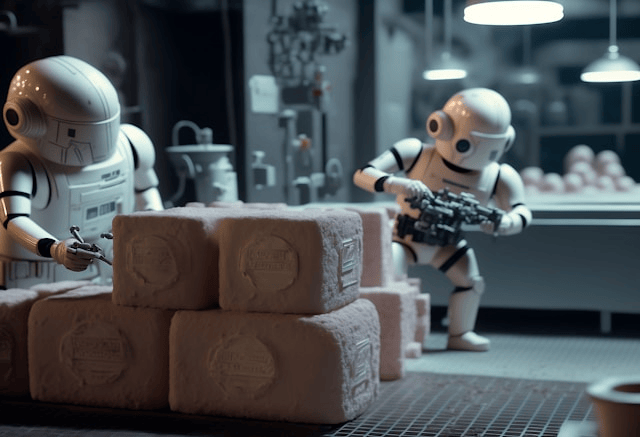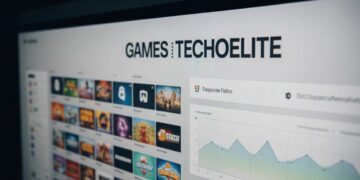When most people think of artificial intelligence, they imagine robots, chatbots, or massive data-crunching systems used by tech giants. But AI has become far more than just a behind-the-scenes analytical tool. Today, artificial intelligence is helping artists, chefs, conservationists, musicians, and even fashion designers bring wild ideas to life.
From writing poetry to discovering new recipes, AI is popping up in unexpected places and in some cases, outperforming human creativity. Here are 10 surprising things built with AI that prove it’s not just about logic and code, but also about imagination and innovation.
1. AI-Generated Art Sold at Auctions
In 2018, a portrait titled Edmond de Belamy made headlines when it sold at Christie’s for $432,500. The twist? It wasn’t painted by a human it was created by an AI algorithm trained on thousands of historical portraits.
AI-generated art is now a growing trend, with platforms like Artbreeder and DALL·E allowing users to create stunning visuals from simple prompts. Artists are using these tools to collaborate with machines, generating unique visuals that blend data with creativity.
This creative use of AI has opened doors for new genres of art, questioning traditional definitions of authorship and aesthetics.
2. AI-Written Books, Poetry, and Scripts
Thanks to natural language processing, AI can now compose entire books, poems, and even movie scripts. GPT-based tools (like the one writing this article) are capable of mimicking literary styles, generating plotlines, and even creating dialogue.
For instance, Sunspring is a short sci-fi film entirely written by AI. Though the plot is surreal and occasionally incoherent, it demonstrates how machines can understand and play with human storytelling elements in unexpected ways.
AI-generated literature is not just a novelty it’s being used by authors as a co-writer to spark new ideas or overcome writer’s block.
3. Fashion Designed by AI
Fashion designers are now collaborating with AI to create cutting-edge apparel. Google’s Project Muze, for example, used machine learning to generate fashion designs based on users’ personality traits and preferences.
Brands like Tommy Hilfiger and Levi’s have explored AI-driven trend forecasting and clothing design. Meanwhile, designers have used GANs (Generative Adversarial Networks) to produce surreal clothing collections that push the boundaries of wearable art.
This is one of the most creative uses of AI, merging technology with personal style and cultural expression.
4. Music Albums and Deepfake Performances
AI can compose entire music albums in various styles, from classical symphonies to EDM. Amper Music, AIVA, and Jukebox by OpenAI are just a few platforms allowing musicians and producers to create AI-generated tracks with minimal input.
One of the most fascinating developments is the rise of AI-generated deepfake performances. AI has been used to mimic voices of iconic musicians like Elvis Presley or Amy Winehouse to produce new “covers” or collaborative tracks.
These advances raise exciting (and sometimes ethical) questions about originality and posthumous performances.
5. AI-Powered Cooking and Recipe Creation
Chefs and food scientists are teaming up with AI to invent new recipes based on ingredient chemistry and flavor profiles. IBM’s Chef Watson was one of the first systems to experiment with creating original dishes, including combinations that humans might never consider.
Other platforms now use AI to recommend food based on dietary restrictions, taste preferences, and even what’s currently in your fridge. It’s a prime example of AI being used in unexpected places to make everyday life more interesting and delicious.
6. AI in Wildlife Conservation
Artificial intelligence is playing a powerful role in protecting endangered species. Conservationists use AI-powered camera traps and drones to identify animals, detect poachers, and monitor ecosystems.
For example, Wildbook is an AI platform that uses facial recognition for animals like whales and zebras, helping researchers track populations and migration patterns.
This use of AI technology proves that it’s not just for big business or consumer apps it can also support environmental protection and biodiversity.
7. AI That Builds Entire Video Games
AI has moved from just powering game enemies to building entire game levels, storylines, and even fully playable indie games. Tools like GPT for dialogue, Procedural Generation algorithms for maps, and AI art for visual assets allow solo developers to create expansive games with minimal resources.
AI Dungeon is a great example, offering a text-based adventure game powered entirely by AI, allowing players to create limitless storylines on the fly.
The integration of AI in game development is making the industry more accessible and creatively open-ended.
8. AI That Recreates Lost Languages and Voices
Researchers are using artificial intelligence to reconstruct extinct languages or ancient pronunciations from minimal historical data. AI algorithms can analyze texts, linguistic patterns, and known language families to suggest how these languages may have sounded.
Similarly, AI voice models can recreate the speech patterns of historical figures or individuals using just a few minutes of audio. This has been used in documentaries and educational content to bring history to life in ways never thought possible.
9. AI That Writes and Designs Websites
Yes, AI can now build entire websites from a simple text prompt. Platforms like Wix’s ADI (Artificial Design Intelligence), Bookmark, and Framer AI allow users to create beautiful, responsive websites in minutes.
Users just need to describe what kind of website they want say, a bakery landing page or a personal portfolio and the AI handles layout, content suggestions, color schemes, and more.
This type of AI application democratizes design and development, making professional websites accessible to non-tech users.
10. AI That Detects Emotions and Mental Health Signals
One of the most surprising and sensitive uses of AI is in analyzing voice tone, facial expressions, or typing patterns to detect emotional states. Startups like Woebot use conversational AI to provide mental health support, while others are developing tools to help detect early signs of depression, anxiety, or burnout.
Though still developing, this use of AI has the potential to revolutionize mental health care, offering support and early detection in ways that were previously unavailable.
Why It Matters
These creative uses of AI go beyond productivity and efficiency they highlight the vast potential for human-machine collaboration. Whether it’s making art, composing music, preserving wildlife, or supporting mental health, AI is showing it can contribute in deeply personal, creative, and meaningful ways.
Exploring the most surprising things built with AI helps break the myth that artificial intelligence is cold, purely logical, or detached from human experience. In fact, when guided with thoughtful input and ethical oversight, AI can enhance and amplify our creativity.
Conclusion
AI is not just about automation it’s a creative partner, an innovator, and even a co-artist. As these examples show, artificial intelligence is helping reshape art, culture, science, and entertainment in ways few could have predicted.








